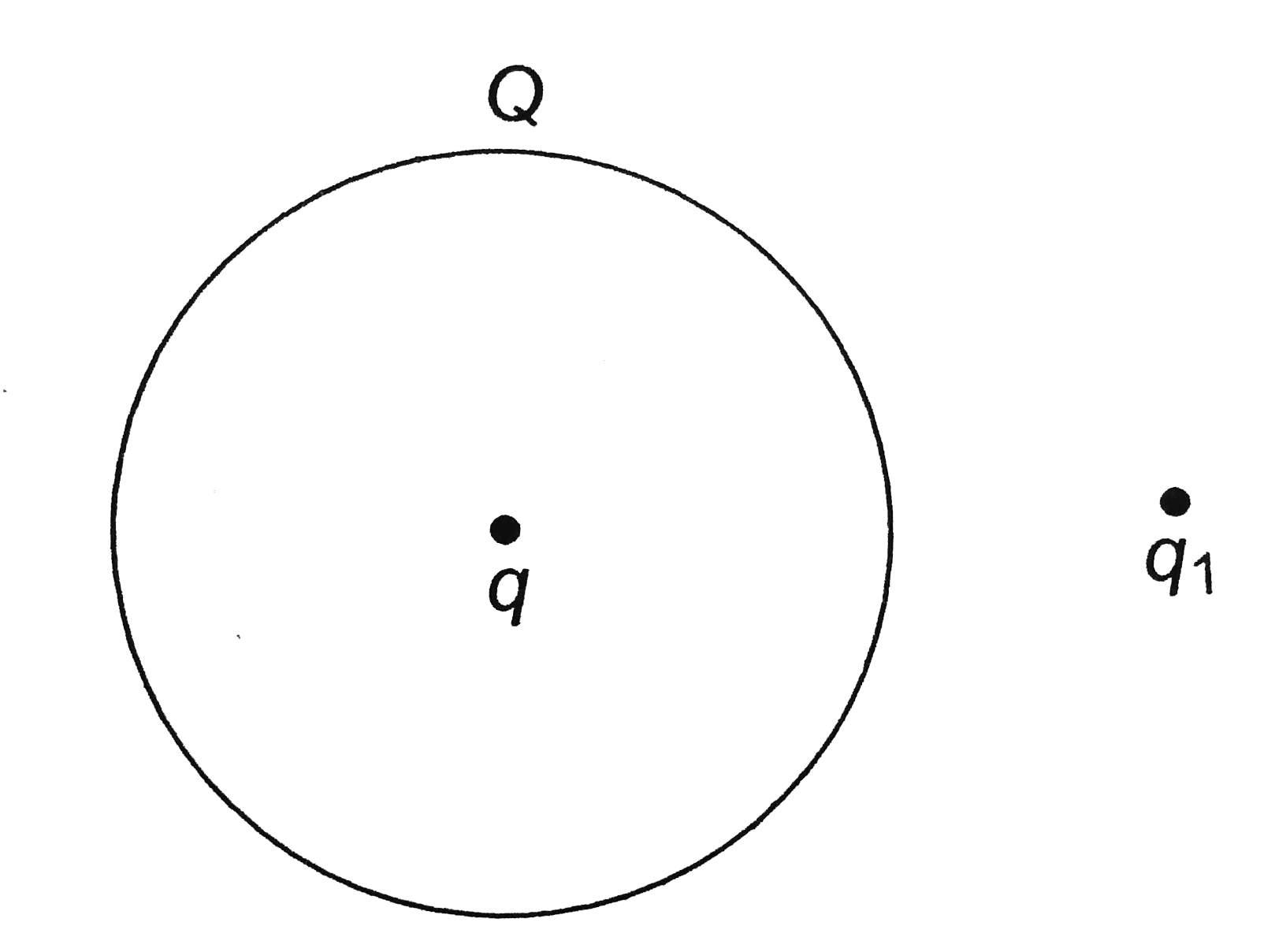Consider the situation of the previous problem. The force on the central charge due to the shell isSolution in Tamil
The correct Answer is:A, B
Acceleration of mass m1=F1−∣F2m1+m−2
Similarly acceleration of mass ltbr> m2=F2−F1m1+m2
due to F1andF2 block of mass m1andm2 will expereince different acceleration and experience an ineertia force
∴ Net forc eon m1=F1−m1a
=F1−m1×(F1−F2)m−1+m−2
m1F1+m2F1−m1F1+2m−1m−1+m2
m2F1+m−1F2m1+m2
Similarly net force on m2
=F2−m2×(F2−F1)m1+m2
=m1F2+m2F2−m2F2+m2F1m1+m2
=m1.F2+m2.F2m1+m2
∴Ifm1 is dispaced by a distance x1andx2bym2 the maximum extension of the spring is x1+x2.
∴ work done by the bocks =energy stored in the spring.
→m2.F1+m1F2m1+m2x(x1)+m2F1+m1F2m1+m2×2
=(12)K(x1+x2)2
→x1+x2=2km2F1+m1F2m1+m2
Topper's Solved these Questions
- CENTRE OF MASS, LINEAR MOMENTUM, COLLISIONBOOK - HC VERMACHAPTER - CENTRE OF MASS, LINEAR MOMENTUM, COLLISIONEXERCISE - Objective -2
11 Videos
- CALORIMETRYBOOK - HC VERMACHAPTER - CALORIMETRYEXERCISE - Exercises
18 Videos
- CIRCULAR MOTIONBOOK - HC VERMACHAPTER - CIRCULAR MOTIONEXERCISE - Exercises
30 Videos
Similar Questions
The centre of mass of a system of particles is at the origin. It follows that:
View SolutionAn aluminium vessel of mass 0.5kg contains 0.2kg of water at 20∘C A block of iron of mass 0.2kgat100∘C is gently put into the water .Find the equilibrium temperature of the mixture, Specific heat capacities of aluminium , iron and water are 910Jkg−1K−1470Jkg−1K−1and4200Jkg−1K−1 respectively
View SolutionFind the accelerationof the moon with respect to the eath from the following data, Distance between the earth and the moon =3.85×105 km and the time taken by the moon to complete one revolution around the earth =27.3days
View SolutionConsider the situation of the previous problem. The force on the central charge sue to the shell is
View SolutionConsider the situation of the previous problem. The directions of the magnetic field due to the dipole are opposite at
View SolutionConsider the situation described in the previous problem. Show that the force on the sphere due to the light falling on it is the same even if the sphere is not perfectly absorbing.
View SolutionConsider the previous problem , let the outer shell have the charge −4q. As in the above problem , the inner shell has the charge +2q. Calculate the electric field in terms of q and the distance r from the common center of the two shells for
a<r<b
View SolutionConsider the previous problem , let the outer shell have the charge −4q. As in the above problem , the inner shell has the charge +2q. Calculate the electric field in terms of q and the distance r from the common center of the two shells for
b<r<c
View SolutionConsider the previous problem , let the outer shell have the charge - 4 q . As in the above problem , the inner shell has the charge + 2q . Calculate the electric field in terms of q and the distance r from the common center of the two shells for The graph of the radial component of E as function of r will be
View SolutionConsider the previous problem , let the outer shell have the charge - 4 q . As in the above problem , the inner shell has the charge + 2q . Calculate the electric field in terms of q and the distance r from the common center of the two shells for
View SolutionIn the previous problem, the velocity of the shell will be
View SolutionIn the previous problem , if the shells A and C are at the same potential , then
View SolutionA thin metallic spherical shell contains a charge Q on it. A point charge q is placed at the centre of the shell and another charge q1 is placed outside it as shown in figure. All the three charges are positive

The force on the charge at the centre is
View Solutionकिसी आवेशित चालक गोले या खोखले चालक गोले के कारण विद्युत क्षेत्र की तीव्रता निम्नलिखित स्थितियों में ज्ञात कीजिये-
गोले के पृष्ठ पर,
View Solution0.6μC आवेश के किसी छोटे गोले पर किसी अन्य छोटे आवेशित गोले के कारण वायु में 0.5N बल लगता है। यदि दूसरे गोले पर 0.9μC आवेश हो, तो दूसरे गोले पर पहले गोले के कारण कितना बल लगता है ?
View SolutionConsider the situation of the previous problem. Let the water push the left wall by a force F1 and the right wall by a force F2.
View Solution
